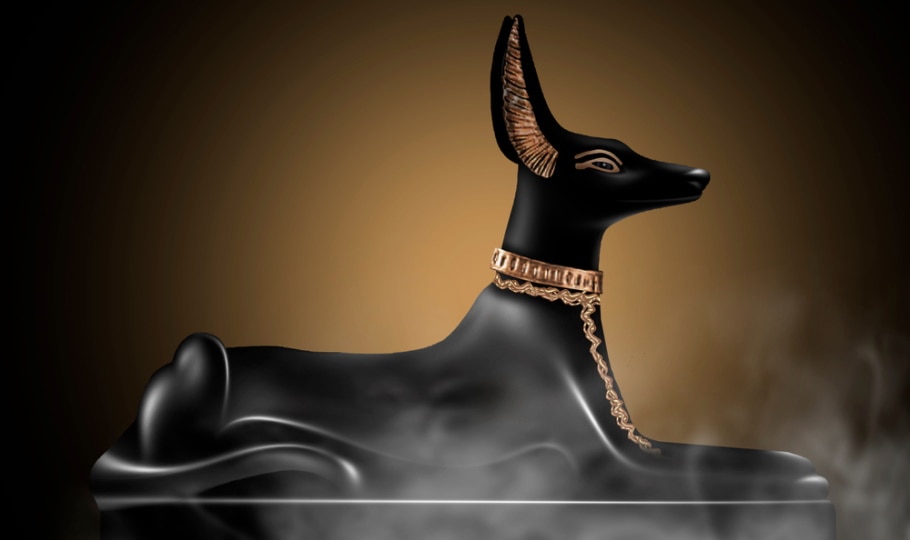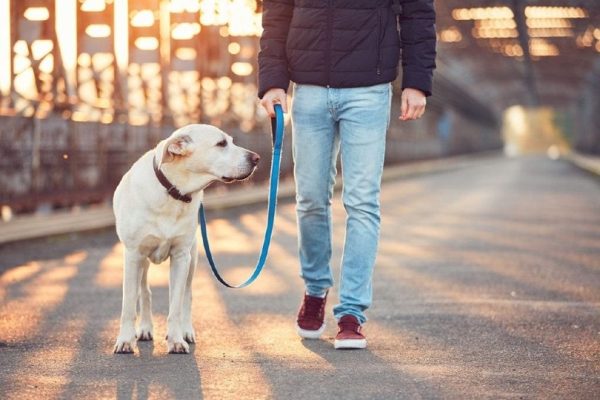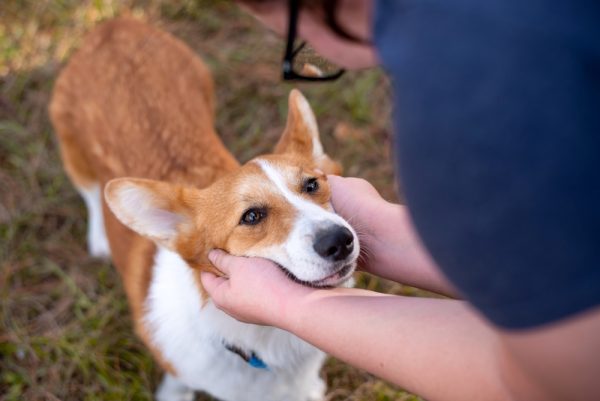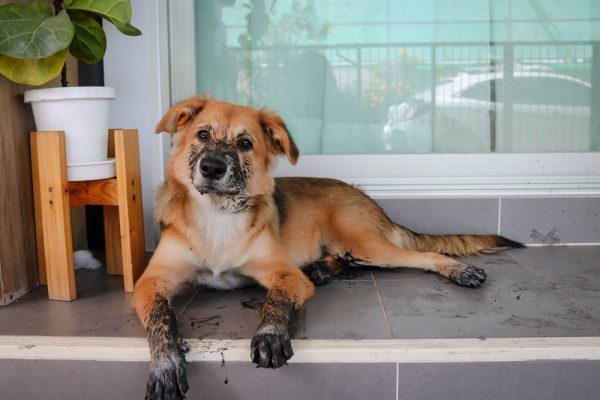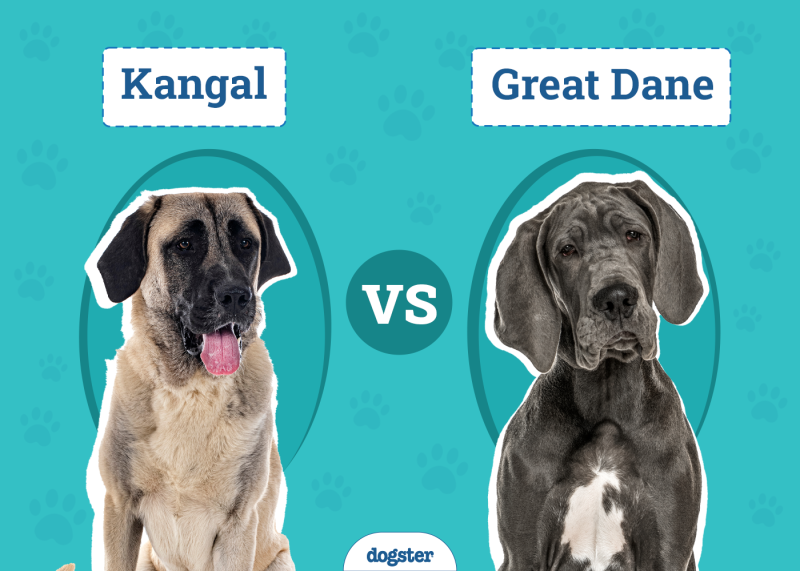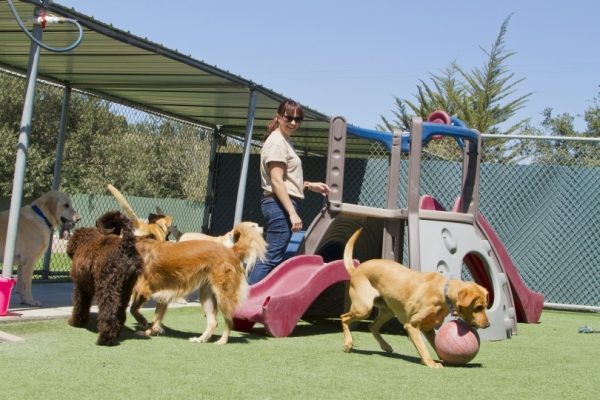In this article
View 2 More +It is widely believed that dogs are either the first or one of the oldest domesticated animals that have stood alongside men for millennia. DNA research has linked dogs and humans together for over 10,000 years, and some historians believe that the first dogs were domesticated around 23,000 years ago in Siberia1.
So, it comes as no surprise that dogs lived among the ancient Egyptians. Proof of their relationship to humans can be found in Egyptian artwork and artifacts that date back to their most influential reign, which took place between 3,100 BC to 30 BC. These ancient artifacts give clues to how dogs played a significant role in the daily life and culture of ancient Egyptians.

Dogs and the Daily Life of Ancient Egyptians
Dogs played an active role in ancient Egyptian life. Researchers have found evidence of domesticated dogs in Egypt long before the empire rose to power. Dog bones dating back to the fifth millennium BC were found in Egypt by archaeologists.
Archaeologists have also discovered a painting of a dog on a leash on a 4,000-year-old tomb. It is believed that the Sumerians invented the dog leash and collar, and they were eventually dispersed to other civilizations, including Egypt. The earliest versions of collars were made with rope. They eventually became works of art and were made with different materials, like leather and various metals, and had pictures and patterns etched onto them.
One of the most well-known ancient Egyptian dog collars belongs to a dog named Tantanuit. This collar was discovered in a tomb and decorated with brass studs, lotus flower artwork, and hunting dogs. It also had Tantanuit’s name inscribed on it. These ornate collars indicated that dogs eventually rose to an elevated status in ancient Egyptian culture.
Dogs in ancient Egypt often assisted humans with herding livestock and hunting animals. They were also guard dogs that protected homes, and some breeds fought in wars. Artwork of dogs seated amongst royalty indicates that they were also valued by pharaohs and other great leaders.
Dogs, Religion, and the Afterlife
Dogs are also intertwined with the religious culture of ancient Egypt. Archaeologists have uncovered tombs with dog statues that were made to protect their masters. Some tombs also contained mummified dogs, which were meant to follow their masters into the afterlife.
A fairly recent study of a catacomb revealed a mass grave of mummified dogs. It is believed that it once held over 8 million mummified dogs, and they were placed by cult worshippers of the Egyptian god Anubis. Pet graves and cemeteries have also been discovered, so it’s very likely that dogs were loved and cherished by many ancient Egyptians.
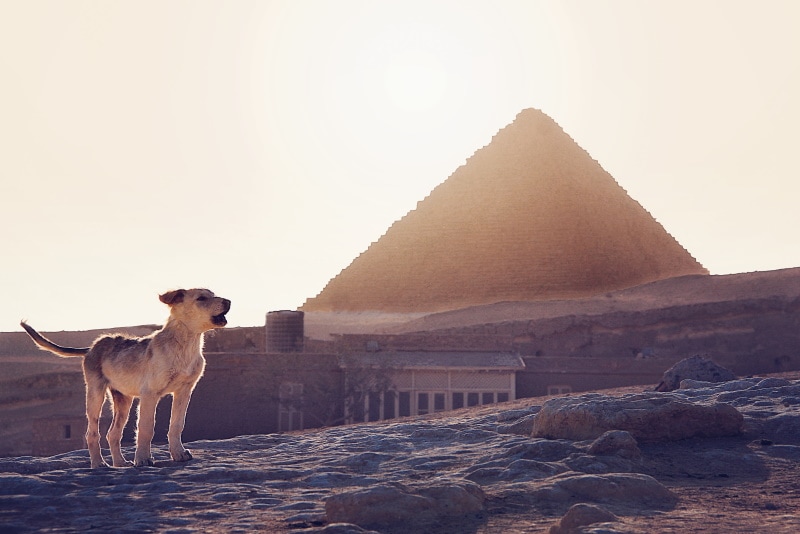
Anubis, the God of the Dead
Anubis is one of the most well-known ancient Egyptian gods. He has the body of a human and the head of a dog. While many refer to him as the “jackal-headed god,” many ancient paintings and sculptures depict him with a dog head that more closely resembles the Basenji.
Anubis played a crucial role in ancient Egyptian religion. He is the son of one of the principal gods, Osiris, and the goddess of disorder, Nephthys. As the god of death, Anubis was the deity that watched over the embalming process. Ancient priests would wear a wolf-like mask during embalming in reference to Anubis.
After the embalming, Anubis would assume the role of the guide that led dead kings in the afterlife. It was believed that he would be with Osiris when judging the hearts of the dead, and his role was to place a heart and a feather on each side of the scale. Then, Thoth, the god of learning and wisdom, would record the results that determined if a king was able to enter the afterworld. If a king’s heart weighed more than the feather, he would be barred from the afterworld and be eaten by Ammit, who was also known as the “Devourer of the Dead.”
There aren’t many more myths of Anubis, but he remained very popular in ancient Egyptian culture and was highly revered and worshiped due to his relationship to death and the afterlife. He was also often associated with the Greek god Hermes because they both guided the dead in the afterlife.
Because of the role he played in the afterlife, it’s no surprise that large numbers of mummified dogs were dedicated to him. While modern depictions of Anubis are often sinister, ancient Egyptians held a more positive view of him and saw him as a symbol of hope as he guided the dead in the afterlife.
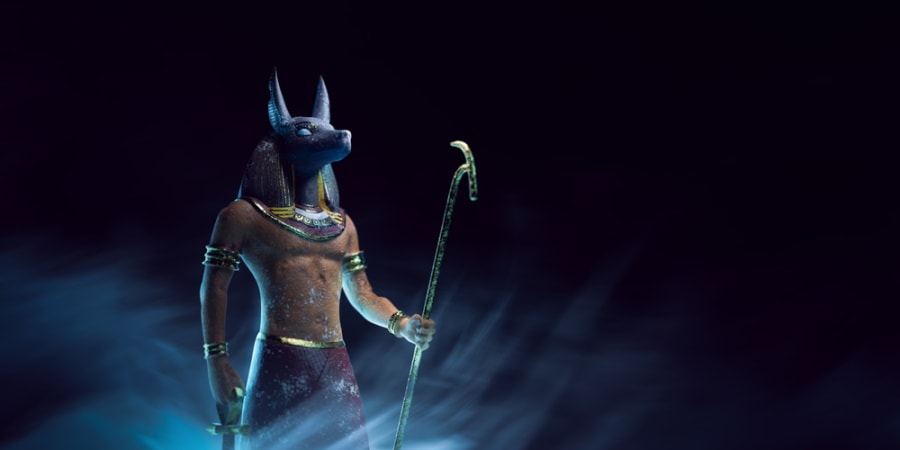

The 6 Egyptian Dog Breeds
Several dog breeds originate from Egypt and northern Africa. Many of these breeds have a lot of energy and stamina as they were used for hunting, herding, and guarding. While many are ancient breeds, they still make wonderful companions today and are often excellent fits for people who live active lifestyles or are looking for an intelligent working dog.
1. Armant
The Armant is also known as the Egyptian Sheepdog and is a herding dog. It received its name from the town of Armant and was most likely developed from mixed breeding local dogs. The Armant isn’t an ancient breed, and its origins date to the early 1900s. To this day, it’s still often used as a herding dog and guard dog. Armants are also extremely loyal and make wonderful family dogs.
2. Basenji
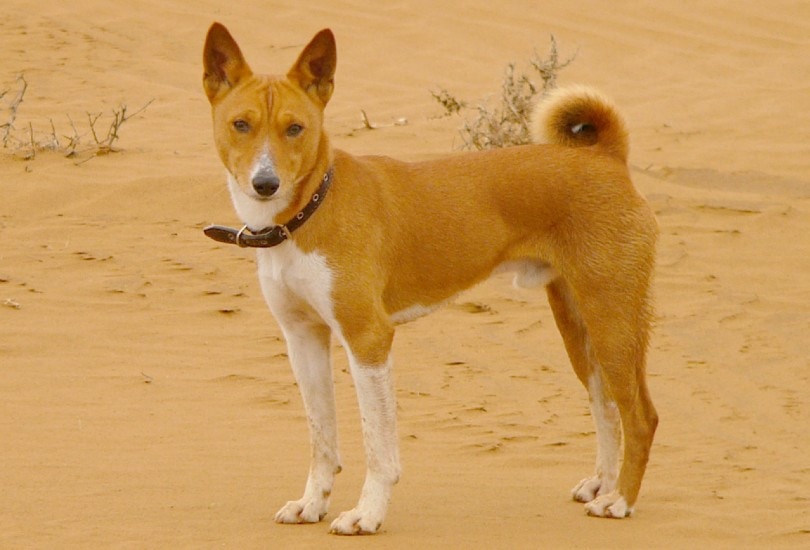
The Basenji is one of the more well-known dog breeds that originate from North Africa. Basenjis are truly an ancient breed, and their ancestors have been painted on the tombs of ancient pharaohs. Breeding has been relatively selective, so the appearance of Basenjis has only changed slightly over the thousands of years of their existence.
Basenjis are extremely loyal and protective, but they also have a gentle side to them. They also don’t tend to bark. So, they’re not often used as guard dogs, but they’re excellent hunters.
3. Baladi Street Dog
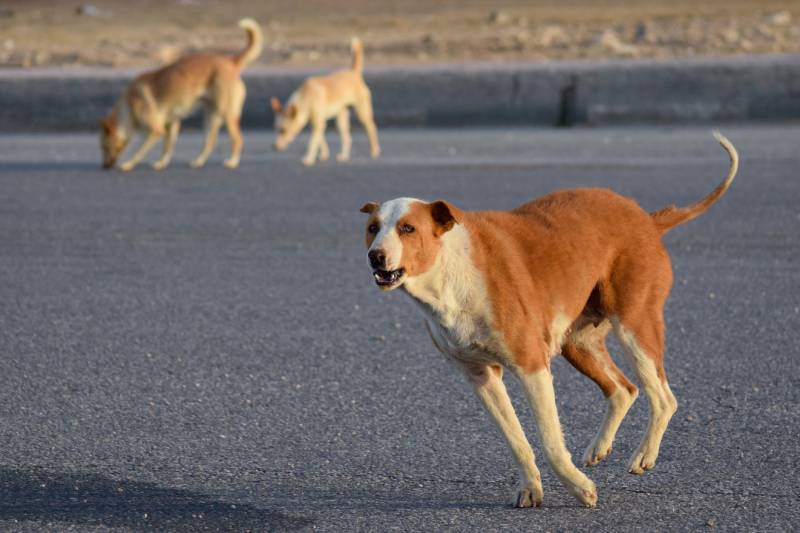
The Baladi Street Dog isn’t purebred. These dogs are a mix of Salukis, Pharaoh Hounds, and Israeli Canaan Dogs and are stray dogs native to Egypt. Most Baladis have similar characteristics and often have slim, muscular bodies and large, pointed ears.
These dogs are extremely hardy and resilient, and overpopulation has been an issue in Egypt for many years. Spay and neuter campaigns have helped to control some population numbers. Adoption programs are also working to create a more positive image of the Baladi and get these dogs adopted into loving homes in Egypt and overseas.
4. Ibizan Hound
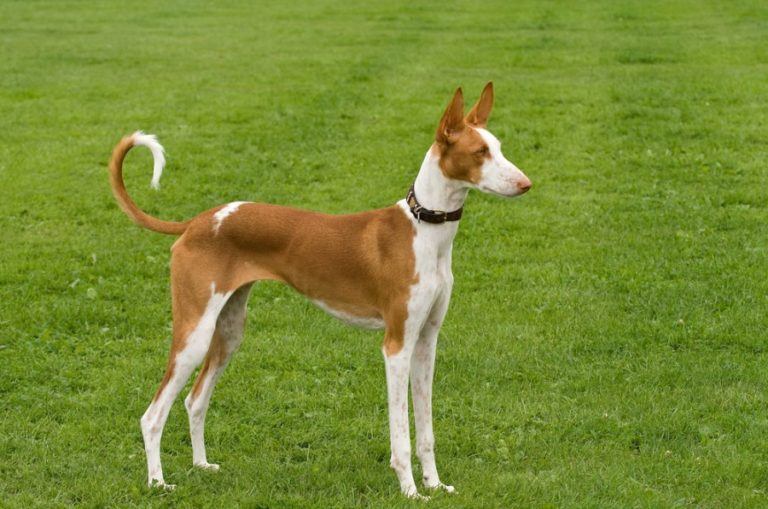
Ibizan Hounds have origins in Egypt, and they eventually made their way to Spain through trade. These dogs are known for their elongated features, and you can find several ancient Egyptian paintings of long and slender dogs that are most likely inspired by Ibizan Hounds.
Ibizan Hounds were originally bred as hunting dogs and excelled in chasing rabbits. They are built for speed and still manage to look graceful while running and chasing after small animals.
5. Pharaoh Hound
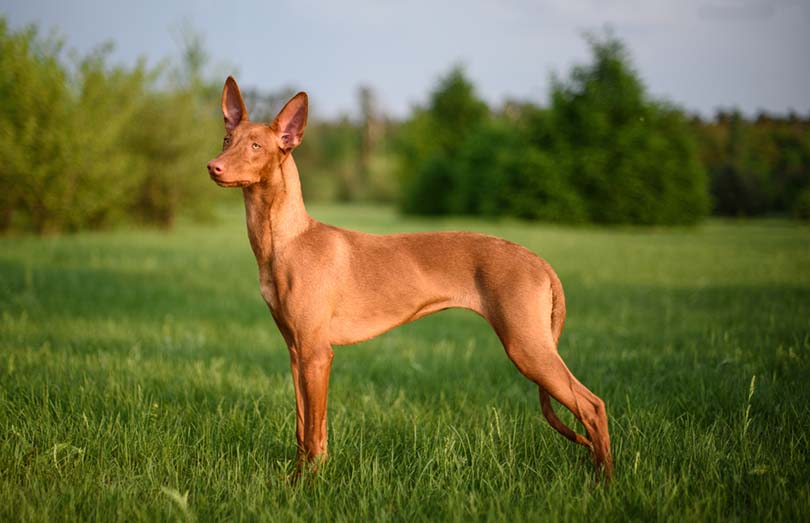
The Pharaoh Hound is another ancient Egyptian dog breed. They have a lean and muscular build that’s similar to Ibizan Hounds. They’re also quite fast and can chase prey on rocky terrain.
These dogs were prized and admired by ancient Egyptians. In fact, an old inscription dating past 3,000 years states, “His face glows like a god,” about this dog breed. This comes as no surprise as Pharaoh Hounds are known to smile and blush when they’re excited or in a good mood.
6. Saluki
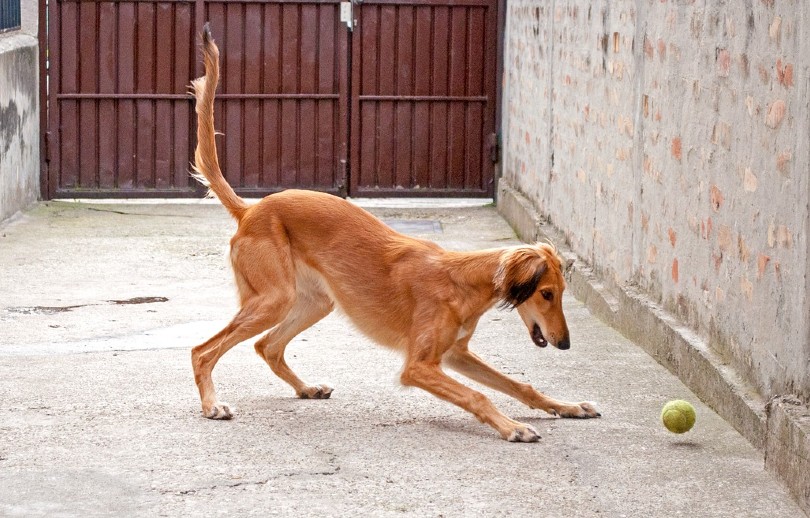
The Saluki is a beautiful dog known for its silky, long ears. Its name roughly translates to “noble” in Arabic, and its existence dates back over 5,000 years. Salukis are another dog breed with drawings that can be found on ancient Egyptian tombs. Archaeologists have also discovered sculptures of these dogs.
Salukis are another fast dog and were used for hunting. As modern-day pets, they still require a lot of exercise and are best suited for people with active lifestyles.

Conclusion
Ancient Egyptians had a fascinating and strong bond with dogs. They were loved and cherished in the present life, and they were also seen as loyal companions for those who pass onto the afterlife.
It’s amazing to see how the role of dogs in ancient civilizations can be so similar to modern-day dogs. We hope that learning about the long and old relationship between humans and dogs sparks a new appreciation for these pets. Make sure to spend some time today showing your favorite dogs your love and appreciation for them!
Featured Image Credit: Mia Stendal, Shutterstock
